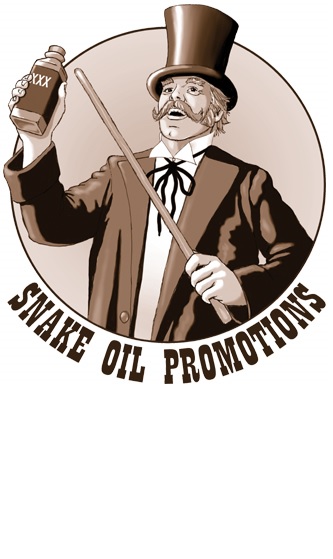 Vitamin B1 and Root Stimulators - July 22, 2015 Jeff Schalau, Agent, Agriculture & Natural Resources University of Arizona Cooperative Extension, Yavapai County Some gardening products are regulated and must prove they contain “the goods”. Fertilizers are tested to ensure the proper nutrient content and pesticides undergo extensive testing to ensure safety and efficacy. Other products are not subject to such rigorous standards. Vitamin B1 (thiamine) is one product that makes claims that cannot be supported by science. So, why do sellers of vitamin B1 products say they “prevent transplant shock” and “stimulate new root growth” if these claims are not true? The “Vitamin B1 for Transplant Shock” myth arose from early work on plant growth regulators, called auxins, which were mixed with vitamin B-1. Further research throughout the last half of the 20th century investigating the application of auxins to root systems suggested that auxins may stimulate root growth, but that vitamin B-1 on its own does not. Delving deeper into manufacturer claims, many rely on early research (late 1930s and early 1940s) which has been refuted by subsequent research and/or research done on plant roots excised from the mother plant or grown in artificial media (without soil). Various studies using woody plants, annual flowers, and crop plants failed to demonstrate that vitamin B1 treatments provide any subsequent growth response. Conversely, vitamin B-1 (thiamine) is an important component of tissue culture media where plant tissues are propagated using sterile conditions and artificial growth media. “Miracle growth” claims used by companies selling vitamin B-1 are usually taken from tissue culture research. Healthy plants manufacture their own vitamin B-1 making it unnecessary to add any additional amounts. Many fungi and bacteria associated with plant roots also produce vitamin B-1, so it’s likely that healthy soils will contain adequate levels of this vitamin without amendment. Some products are marketed as root stimulators. While these products often list vitamin B-1 as an ingredient, they may also contain auxins and/or fertilizers. Common auxins are indole butyric acid (IBA) and naphthylacetic acid (NAA). These are common ingredients in “rooting compounds” sold by retail garden and horticultural suppliers and are excellent for propagating cuttings. IBA has had some success in root regeneration in transplanted trees and some evidence indicates that it may redirect resources to the roots by suppressing crown growth. NAA tends to be toxic to seedling root development, as it inhibits primary root growth and enhances lateral root growth. This latter activity may account for NAA’s success in regenerating roots of transplanted and root-pruned trees. Like IBA, NAA suppresses crown growth, which also may redirect resources to the roots. Lateral root growth following transplanting is fine as long as the new roots continue to expand into the native soil surrounding the original root ball. Nitrogen and phosphorus fertilizers are also commonly applied at planting (or prior) when growing vegetables and annual flowers. Fertilizers can have negative impacts on beneficial soil microorganisms such as mycorrhizal fungi, bacteria, and protozoa. These microorganisms are present in native soils and support other beneficial soil-dwelling macro-organisms which make up the soil food webs. For this and other reasons, fertilizer application at the time of planting is generally not recommended by the University of Arizona Cooperative Extension for woody or native landscape plants. Proper irrigation has been shown to help plant root systems become established successfully in our arid climate. That’s right, plain old water is often the most important factor in transplant success. To this end, make sure that applied irrigation not only saturates the root ball, but also some of the adjacent native soil. This will encourage new roots to expand and colonize a greater soil volume and hence help the plant to be better able to utilize available soil nutrients and natural precipitation. It is fairly easy to find testimonials for vitamin B-1, root stimulators, and other garden products. It is more difficult to find published studies on the efficacy of these materials. I encourage gardeners to carefully scrutinize anecdotal claims and seek out science-based information before purchasing “miracle products”. See the online edition for supporting information (URL below). Follow the Backyard Gardener on Twitter – use the link on the BYG website. If you have other gardening questions, call the Master Gardener help line in the Camp Verde office at 928-554-8992 or e-mail us at verdevalleymg@gmail.com and be sure to include your name, address and phone number. Find past Backyard Gardener columns or provide feedback at the Backyard Gardener web site: http://cals.arizona.edu/yavapai/anr/hort/byg/. Additional Resources The Myth of Vitamin Stimulants: "Vitamin B-1 reduces transplant shock by stimulating new root growth" Washington State University Extension puyallup.wsu.edu/wp-content/uploads/sites/403/2015/03/vitamin-b1.pdf Snake Oil, Horticultural Myths, Horticultural Urban Legends, and Persuaders in our Industry University of California Farm Advisor Blog ucanr.edu/blogs/blogcore/postdetail.cfm?postnum=6369 Beware of Gardening Myths Colorado State University Cooperative Extension www.colostate.edu/Dept/CoopExt/4DMG/Garden/beware.htm |